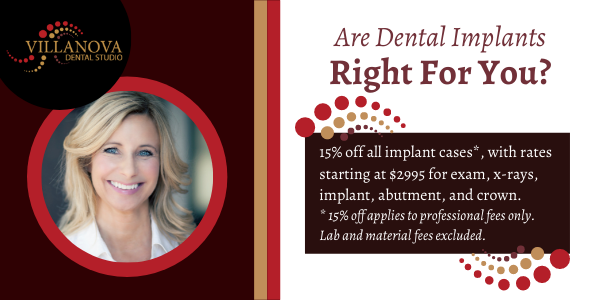 Orthodontics uses a wide range of oral appliances, including braces, to reposition the teeth and/or the jaw for a healthier, functional and stable bite. Treating crooked teeth, malocclusion and TMJ disorders with appropriate orthodontic care can ensure the long term dental health and enhance the aesthetics of your smile.
Orthodontics uses a wide range of oral appliances, including braces, to reposition the teeth and/or the jaw for a healthier, functional and stable bite. Treating crooked teeth, malocclusion and TMJ disorders with appropriate orthodontic care can ensure the long term dental health and enhance the aesthetics of your smile.
Without proper treatment, most patients risk tooth damage, complex bite problems, discomfort associated with TMJ and a greater incidence of gum disease.
Dr. Barakat may recommend the use of an oral appliance as part of the early intervention in young patients or to augment the use of braces in teen and adult patients. Oral appliances are often used as one part of a more comprehensive orthodontic treatment plan.
What are the different types of orthodontic appliances?
- Palatal expander: also known as a rapid palatal expander, expands a small palate or underdeveloped palate to accommodate healthy permanent teeth development. This will also address upper jaw alignment issues.
- Functional appliances: These enable normal jaw and tooth development by addressing thumb sucking and tongue thrusting. Functional appliances can be split into two categories: fixed and removable. These include: Distalization appliances, Class II, Class III, Intrusion, Mesialization and Vertical Dimension appliances.
- Sagittal appliances: These allow for normal tooth development where crowding may occur by expanding, or slowly widening your upper jaw arch. This creates room for teeth in your upper jaw.
Life often throws us curveballs and demands as we deal with stressful situation after stressful situation. With the constant stress facing many patients as a result of our busy lives, it is no surprise that bruxism, better known as teeth grinding, is such a common para-functional habit among adults.
We understand the dental trauma that bruxism can cause. Dr Barakat dedicated to helping you restore and maintain your dental health- and break your teeth grinding habit!
Bruxism can involve both teeth grinding and jaw clenching and most often occurs during sleep. You may ask—if I am not aware that I’m grinding my teeth, how can I stop it?
Before we explore treatments for bruxism, it is important to understand why it occurs. Teeth grinding is most often attributed to stress and anxiety, though it can also be caused by sleep disorders, misaligned or crooked teeth, and temporomandibular joint disorders (TMJ).
Symptoms of Bruxism
Bruxism often presents with the following symptoms following sleep:
- Frequent dull headache
- Jaw or neck soreness
- Painful or loose teeth
- Cracked teeth
If you believe that you are experiencing teeth grinding during sleep, it is important to correct this habit before permanent damage is done. In some cases, when stress is determined to be the source of your bruxism, relaxation techniques such as meditation, yoga, or exercise before bedtime can reduce or eliminate teeth grinding.
In cases where teeth have been damaged or a bite disorder is diagnosed, Villanova Dental Studio can create a restorative treatment plan to address damaged teeth and/or realign the bite. Treatment options may include:
- Dental crowns
- Tooth bonding
- Dental veneers
- Orthodontics
Teeth Grinding in Children
Though stress is a common cause of bruxism for adults, this may not be the case for children. Teeth grinding and jaw clenching in children may be caused by irritation in the mouth, allergies, or misaligned teeth. Because teeth change so often in children as they grow, bruxism often does not require treatment and may be outgrown by adolescence.
Sometimes bruxism in children can cause unwanted side effects as they grow. Teens who grew up with teeth grinding issues sometimes find that their permanent teeth grow crooked and have developed malocclusion. To address the effects of bruxism in our young patients, we provide Invisalign for teens in Stittsville, ON. Invisalign for teens is the best way to straighten teeth in young adults.
Dental Monitoring
Dental Monitoring is an innovative technology that revolutionizes the way orthodontic treatment is monitored and managed. Patients use their smartphones to capture images of their teeth and submit them through the app. The images are then analyzed by our doctors using artificial intelligence algorithms to evaluate tooth movement, treatment progress, and oral health. It eliminates the need for frequent in-person appointments, reducing travel time and inconvenience. The real-time monitoring provided by Dental Monitoring enables early detection of any issues or complications, allowing for timely intervention and adjustments in treatment plans. Additionally, it promotes patient engagement and compliance by providing personalized treatment updates and reminders. Overall, Dental Monitoring improves the efficiency and convenience of orthodontic treatment, enhances patient experience, and contributes to achieving optimal treatment outcomes.


 1261 Stittsville Main Street, Unit #9
1261 Stittsville Main Street, Unit #9
 1261 Stittsville Main Street
1261 Stittsville Main Street


